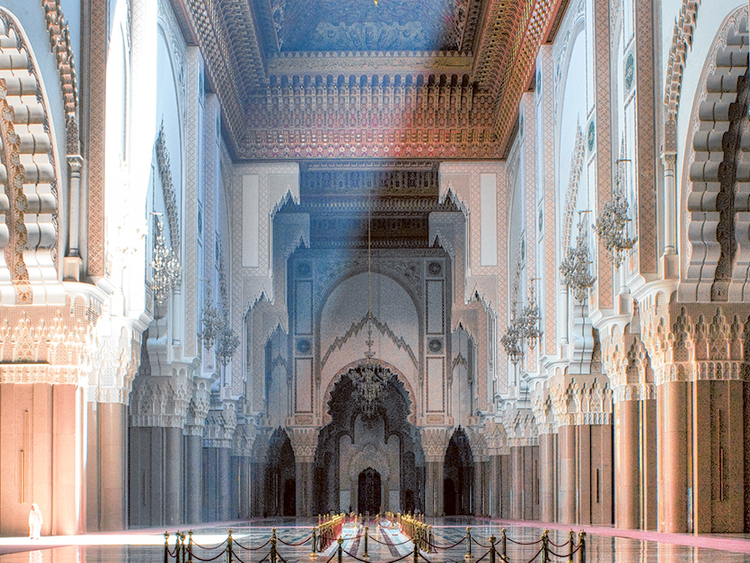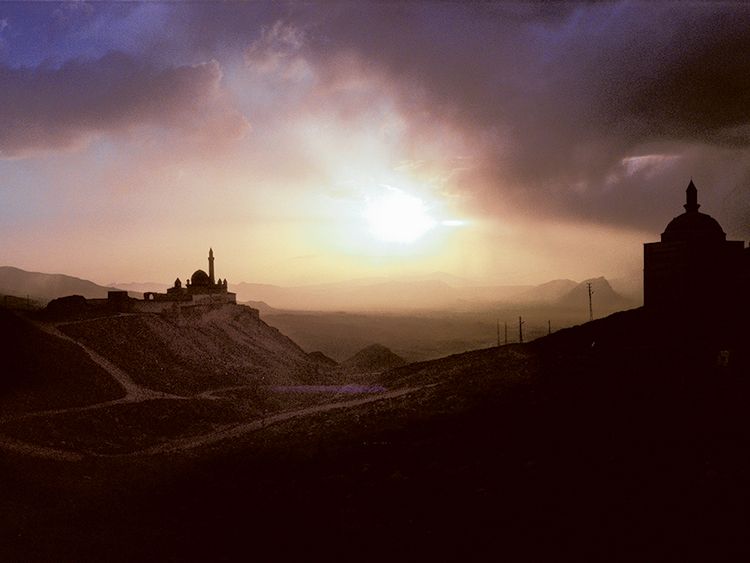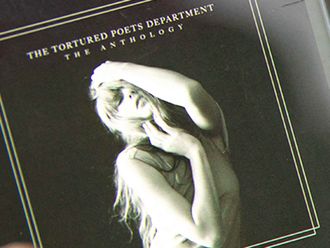
British photographer Peter Sanders began his career in the Sixties by covering London’s seminal rock’n’roll scene. But in the late Seventies he embarked on a spiritual journey that took him to India and eventually led him to embrace Islam.
Since then he has dedicated himself to documenting Islamic culture and monuments in countries around the world. The close relationships he developed with Muslim communities during his travels allowed him to photograph people and places that few photographers have access to. He was among the first professional photographers to take pictures of the holy cities of Makkah and Madinah, and of the haj.
His collection of over 250,000 images from 40 countries is a unique documentation of traditional Muslim societies in transition. In his first exhibition in Dubai, “The World is but a Moment”, Sanders is showcasing a selection of photographs taken over the last three decades.
The striking images include pictures of Makkah, of the Dome of the Rock in Occupied Jerusalem, of ancient mosques in China, Malaysia and other countries, and portraits of revered Islamic teachers. Also included are images of everyday scenes on the streets in places such as Morocco and Yemen, and pictures taken during a road journey along the silk route from Turkey to Turkmenistan.
We spoke to the artist about his life and work. Excerpts:
How did you get involved in photographing the music scene in London?
I have no formal training in photography. I just happened to hear that someone was selling a professional camera for £60 (Dh357), and just then I got a tax rebate of that exact amount, so I bought the camera. And then, my landlord offered me some photographic equipment left behind by the previous tenant.
So, I set up a dark room in the bathroom and taught myself. I focused on the music scene because it was the most happening thing in London during the Sixties. I was fortunate to take pictures of legendary musicians such as Bob Dylan and Jimi Hendrix that were published in leading magazines.
Why did you give up that career?
I was disillusioned by the rampant drug culture and the death of many musicians from drugs, and turned to meditation. My interest in spirituality was also influenced by the Beatles, who travelled to India. I had no money to travel, but some pictures I took of Jimi Hendrix just a few weeks before he died earned me enough to make the trip.
I spent a long time in India, visiting various ashrams and eventually found my spiritual teacher in Sathya Sai Baba. But when I returned to England, some friends introduced me to Islam and Sufism, and I was instinctively drawn to it. I took that leap of faith because it just felt right.
What motivated you to travel around the world taking Islam-centric pictures?
I spent my first Ramadan in Morocco, living alongside very poor people in a mosque shelter, listening to talks by a learned teacher, and soaking in the spiritual atmosphere. Even though I had no money to travel, destiny contrived to help me to go for haj.
The pictures I took in 1971 of Makkah and the haj were published in many prestigious Western publications. Since then I have been travelling and taking pictures of Muslim communities in different places. I want to go to places with a rich Islamic culture, document the whole way of life of the people, and create images that represented Islam in a positive way.
I am passionate about this because I feel I have a certain insight and empathy that perhaps other Western photographers do not have.
What do you look for as a photographer?
I am always looking to capture the spiritual side of the religion, and the light is an important part of that. For instance, I waited many hours to photograph the Kaaba in the early morning light; and I slept in my car on a freezing night to capture the Ishak Pasha palace on the Turkey-Iran border in the first rays of dawn.
Everywhere I go I try to meet Islamic scholars, and to get to know the people, because that helps me to understand Islam better and gives me a global experience of Islam. I have seen that even though the culture is different in different places, the people are connected by the common threads of Islamic values such as generosity, hospitality and good morals.
Photography is a wonderful process — it is a gift from God that has allowed me to learn so much about myself and the world around me. It is like chasing a moment — like trying to capture a beautiful bird in flight. And looking back, I can see that by the grace of God I have been able to record aspects of Islamic societies that are rapidly changing or even disappearing.
Please share some memories of such moments.
There is a story behind every picture. Some of my happiest memories are of taking pictures of the Kaaba, and of the Dome of the Rock. I also enjoyed photographing the Muslims in China. It is fascinating to see that the early mosques, such as the 1,000-year-old Niujie Mosque in Beijing look like pagoda temples with beautiful red and gold lacquer decorations.
I have travelled throughout China and I feel happy to see that Islam spread here because of the positive way in which Arab traders represented it and the way they integrated with the Chinese people. I also like taking pictures of domes of mosques. It is difficult because you need to find the exact centre, and because I do not use a digital camera, I know whether I got it right only after the pictures are developed.
What are your plans for preserving your unique collection of images?
I have over a quarter of a million slides of the Islamic world. My vision is to create an archive, not only of my collection, but also that of other photographers. I have started digitising my pictures, but it is a long and expensive process.
I am also working on a book about all the saints and teachers I have met. I feel that the stories these pictures tell are important for young people because today Islam is being misrepresented and is going through difficult times, and we need to remind people of the essence of this beautiful religion.
Jyoti Kalsi is an arts enthusiast based in Dubai.
“The World is but a Moment” will run at The Empty Quarter, DIFC, until June 15.















